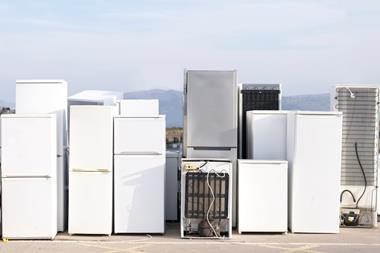Tricky times for Chinese fluorochemical producers
Hepeng Jia and Xiaohua Sun/Beijing, China and Bali, Indonesia
China’s fluorochemical industry is booming, thanks to a rising demand for the air conditioning units and refrigerators that rely on these coolants.
It has also benefited from the Kyoto Protocol’s Clean Development Mechanism (CDM), which allows countries with a commitment to reduce their emissions of greenhouse gases - such as those produced by the fluorochemical industry - to pay developing countries like China to make those reductions on their behalf.
But at the United Nations climate change conference in Bali, Indonesia, in December 2007, it became clear that the CDM is no longer so lucrative.
Cheap credit?
The process used to make the refrigerant HCFC-22 (chlorodifluoromethane) also creates the by-product HFC-23 (trifluoromethane), which is about 11?700 times more potent as a greenhouse gas than carbon dioxide (CO2).
Reducing carbon emissions by one tonne is equivalent to a ’carbon credit’, which can be traded through the CDM. So reducing HFC-23 emissions is worth thousands of carbon credits - yet it can be destroyed inexpensively using thermal cracking and chemical scrubbing.
Consequently, HFC-23 reduction projects in China and India now account for about half of all carbon credits. But there has been mounting concern that the system may actually encourage over-production of HFC-23 waste.
Industry insiders deny making extra HFC-23 in return for carbon credits. ’Making stable HFC-23 can influence the production of HCFC-22,’ one expert told Chemistry World. ’Extracting HFC-23 in accordance with the process required by the CDM could lower the quality of the HCFC-22 product.’
Meanwhile, the industry has found that the CDM has not proved as profitable as many once thought. The cost of implementing HFC-23 destruction is generally higher than companies had expected - as reflected in the 2007 mid-term reports of the listed fluorochemical makers such as Shanghai 3F New Materials.
The Chinese government has also imposed a 65 per cent levy on the revenues produced by HFC-23 CDM projects to support other, less profitable, CDM schemes.
And the market price of HCFC-22 has seen a steady decrease throughout 2007, despite the general price rise of most chemical products, according to Ni Zhenyu of the CDM department of Zhejiang Juhua, the largest fluorochemical maker and the earliest seller of HFC-23-based carbon credits in China.
’Because the downstream users generally believe that HCFC-22 producers have made high profits for selling HFC-23 destruction, they have been collectively pressing down the market prices,’ Ni told Chemistry World.
A row in Indonesia
The slump in profits coincides with more bad news for the industry from the recent UN climate conference in Bali.
This stems from a CDM rule that fluorochemical producers wanting to sell HFC-23-based carbon credits must have operated for at least three years before 2004 - a stipulation designed to stop factories setting up business solely to make money by destroying HFC-23.
Xiao Xuezhi, a CDM expert at the State Environmental Protection Administration (SEPA) who has operated most of China’s HFC-23 CDM projects, says nearly all Chinese manufacturers that qualify have been registered to sell HFC-23 carbon credits.
’But most newcomers to the industry are now focused on selling HCFC-22 - whose demand has surged due to China’s fast economic growth - instead of solely on producing HFC-23 for destruction through the CDM, although some of them may have wanted to reap the benefits of both,’ Xiao told Chemistry World.
In Bali, the Chinese and Indian delegations argued that the current HFC-23 CDM schemes should be expanded to enroll new producers, but the proposal was not adopted. Zhang Mengheng, a Chinese delegate to the UN conference from SEPA, says that strong opposition came from countries such as Brazil and Argentina, who are afraid that new HFC-23 CDM projects will flood the market with carbon credits, pushing down the costs of carbon offsetting.
According to one fluorochemical industry insider, the decision means that newer HCFC-22 producers, who are not qualified to take part in the CDM, will suffer dwindling profits while their HFC-23 still contributes to global warming.
From Bali to Montreal
During the Bali negotiations, it was suggested that HCFC-22 producers could profit from eliminating HFC-23 through a different mechanism - the Montreal Protocol, which aims to reduce ozone-depleting gases such as HCFC-22.
As a concession made in the protocol, developed nations agreed to stop producing HCFC-22 by the end of 1990s while developing countries are allowed to increase their HCFC-22 production until 2016, and maintain that level until 2040.
According to Zhang, efforts to reduce both HCFC-22 and HFC-23 production could be merged into the Montreal Protocol.
’On the one hand, producers can get incentives to eliminate HFC-23; and on the other hand, China can help cool down the rising global temperature,’ said Zhang. ’Compared with the current embarrassment that HFC-23 is still being released by factories not included in CDM projects, it is a win-win solution.’







No comments yet